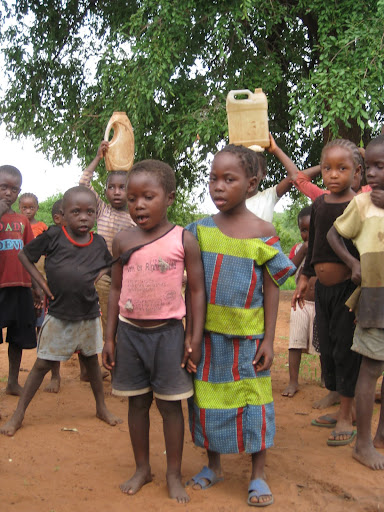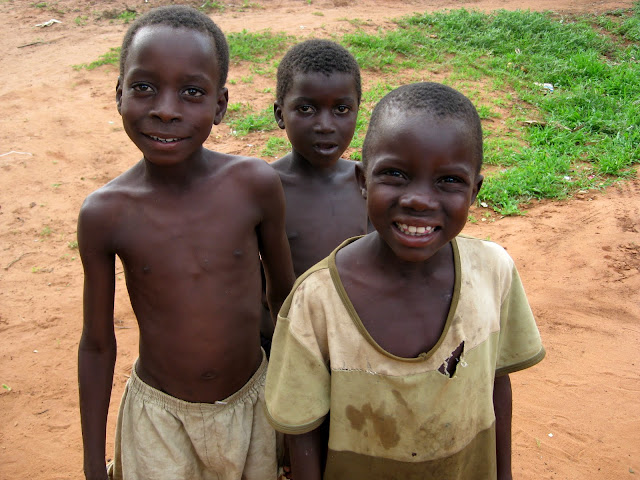 As part of our stay at the River Club, we visited a local community, Simonga Village, that has a very close relationship with the hotel. It was an interesting experience, though a bit uncomfortable from our perspectives. I wrote about the visit for World Nomads’ Responsible Tourism Blog, which can be found here, or copied below.
As part of our stay at the River Club, we visited a local community, Simonga Village, that has a very close relationship with the hotel. It was an interesting experience, though a bit uncomfortable from our perspectives. I wrote about the visit for World Nomads’ Responsible Tourism Blog, which can be found here, or copied below.
A Beneficial But Uncomfortable Community Visit
Over the past five months, I’ve had the opportunity to visit a number of rural communities as part of my travels and cultural interests. Some have been amazing experiences, others have been mediocre encounters. But in all cases, the hearts of the organizers, communities, and travelers were in the right place, with the end goal of providing benefits to the host community while providing a rich and interactive experience for the traveler. What I’m coming to realize, however, is that even when the system is set up properly, the experience is only as good as the time you put into it.
The Simonga Village is a small community about 20km outside the border town of Livingstone, Zambia. The region is home to one of Africa’s premier tourist destinations, Victoria Falls – one of the seven natural wonders of the world. The Zambian side of the falls has seen a tourism surge in the past decade due to the ongoing political and social turmoil in neighboring Zimbabwe, and tourist infrastructure has quickly developed to meet the increasing demand. Simonga is situated near a number of hotels and lodges along the Zambezi River above the falls. One of these properties, The River Club, has sort of “adopted” the village as a way to give back to the surrounding community.

Children welcome tourists with a song

Simonga Village children
Simonga has learned some important lessons from other neighboring communities, and is one of only a handful of villages that has truly embraced tourism as an opportunity for increasing the quality of life for their people. Traditionally, villages in the region were not interested in welcoming visitors to their homes, believing that tourists would bring bad fortune, and the photos they took would steal their souls. Simonga’s village elders, however, saw the region’s growth in tourism as a way to bring great benefits to it’s community, and with the help of the River Club and its guests, the community has thrived in relation to its neighbors.
I gotta hand it to Simonga and the River Club – they are working hard to make this a win-win for everyone involved. The community tours offered to River Club guests attempt to provide some sincere interaction between guests and villagers (which is hard to do in a 30-60 minute visit). The tours are conducted in a respectful manner, always requesting entry and permission for conversation and photos. The kids don’t beg for money, and seem interested in talking and playing with the tourists. As a result, donations from the River Club and its guests have helped the community to renovate their water supply system and school, build a police post and a medical clinic, and pay the tuition for over 50 students to attend high school in the neighboring town. Additionally, the River Club employs a number of Simonga’s residents on their staff.
Sounds pretty peachy, right? For some, it certainly is – a few of our fellow guests raved about the experience, how they got to see how rural Africa really lives, and how cute the kids were. But for me, it was just plain uncomfortable. A colleague of mine calls these “pet the children” visits – sarcastically comparing the experience to visiting animals in a zoo. I mean, the idea of a rich foreigner swinging through my neighborhood to see my lifestyle and living conditions is not only awkward, but degrading. Spending less than an hour with the villagers provides nothing more than surface-level insights about African communities, and little, if any, meaningful interaction. To me, visiting poor communities without trying to contribute to their well-being is selfish and harmful.

Tourists taking photos of kids
So, if Simonga and the River Club actually have a good system in place to ensure benefits are distributed, and the experience is still detrimental in some respects, then what can be done? To me, it’s one simply factor – time. Visiting a community for an hour, or even three, is simply not enough time to demonstrate that you, the visitor, care about the well-being of these villagers. In order for them to open up to you, they must have some level of trust in you – trust that you actually care and are not just looking to see how poor people live. If you want to visit a community to experience village life, then take the time to get to know them. Spend a few nights, share stories, try walking in their shoes for a few days. The time that you put in will determine the fulfillment that you (and your hosts) will get out of the experience.
 As part of our stay at the River Club, we visited a local community, Simonga Village, that has a very close relationship with the hotel. It was an interesting experience, though a bit uncomfortable from our perspectives. I wrote about the visit for World Nomads’ Responsible Tourism Blog, which can be
As part of our stay at the River Club, we visited a local community, Simonga Village, that has a very close relationship with the hotel. It was an interesting experience, though a bit uncomfortable from our perspectives. I wrote about the visit for World Nomads’ Responsible Tourism Blog, which can be